Caviramus
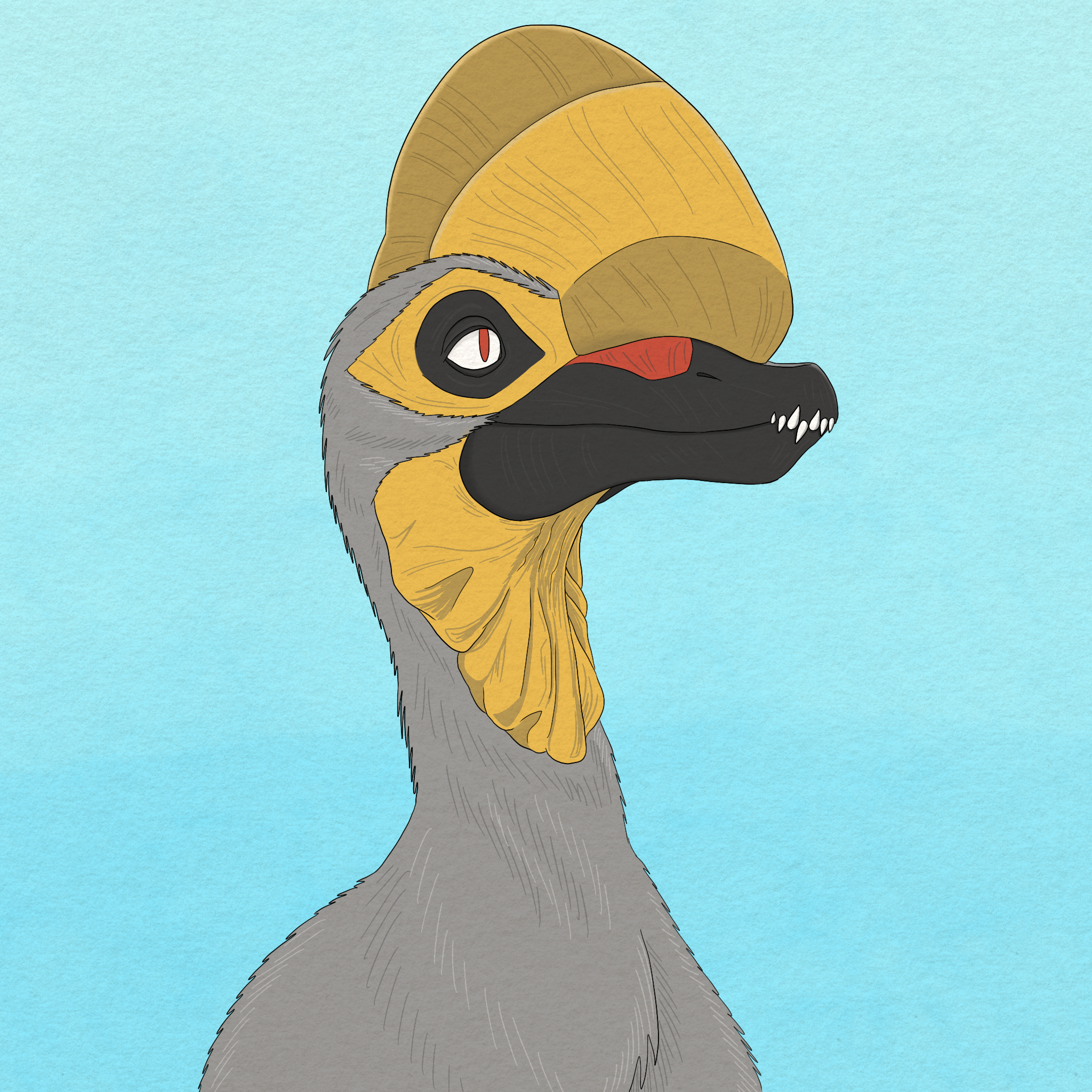
Caviramus was a crow-sized eopterosaurid from Late Triassic Switzerland. It was one of the first pterosaurs, by a long margin, to experiment with extreme headgear (spectacular crests only became common again in the Cretaceous, 100 million years later). Caviramus’s jaw shape, protruding teeth, and crest altogether look very reminiscent of the Pokemon, Hakamo-o, so that’s what the coloration is inspired by. (Coincidentally, Mark Witton’s depiction of Caviramus exhibits a similar gray-yellow color scheme–was he influenced by Hakamo-o too?) I also used photo references of hornbills.
Borealopelta
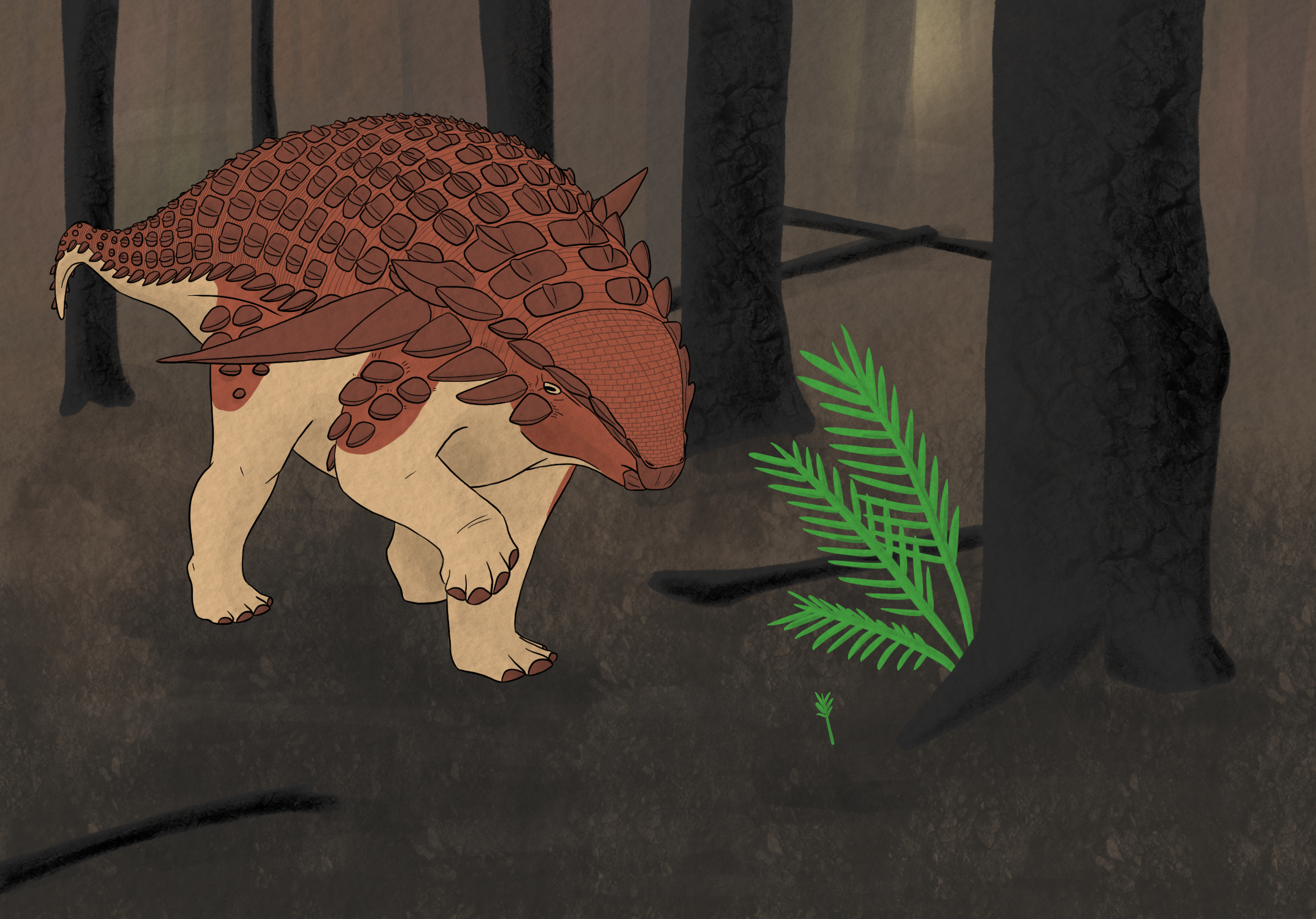
Borealopelta was a nodosaur (the armored dinosaurs without tail clubs) from Early Cretaceous Canada, known from a single beautifully-preserved mummy. New analysis of the fossil has yielded gut contents, so now in addition to knowing the color and osteoderm positions of this animal, we also know its last meal! Turns out, a majority of the material consisted of a single species of fern, and most of the rest was charcoal. This indicates that Borealopelta (or at least this individual) might’ve been an early repopulator of areas that had recently been burned by forest fires. Perhaps that one fern was particularly hardy or fast-growing, making it more abundant in these areas–or, perhaps it was just this individual’s favorite!
Thylacosmilus
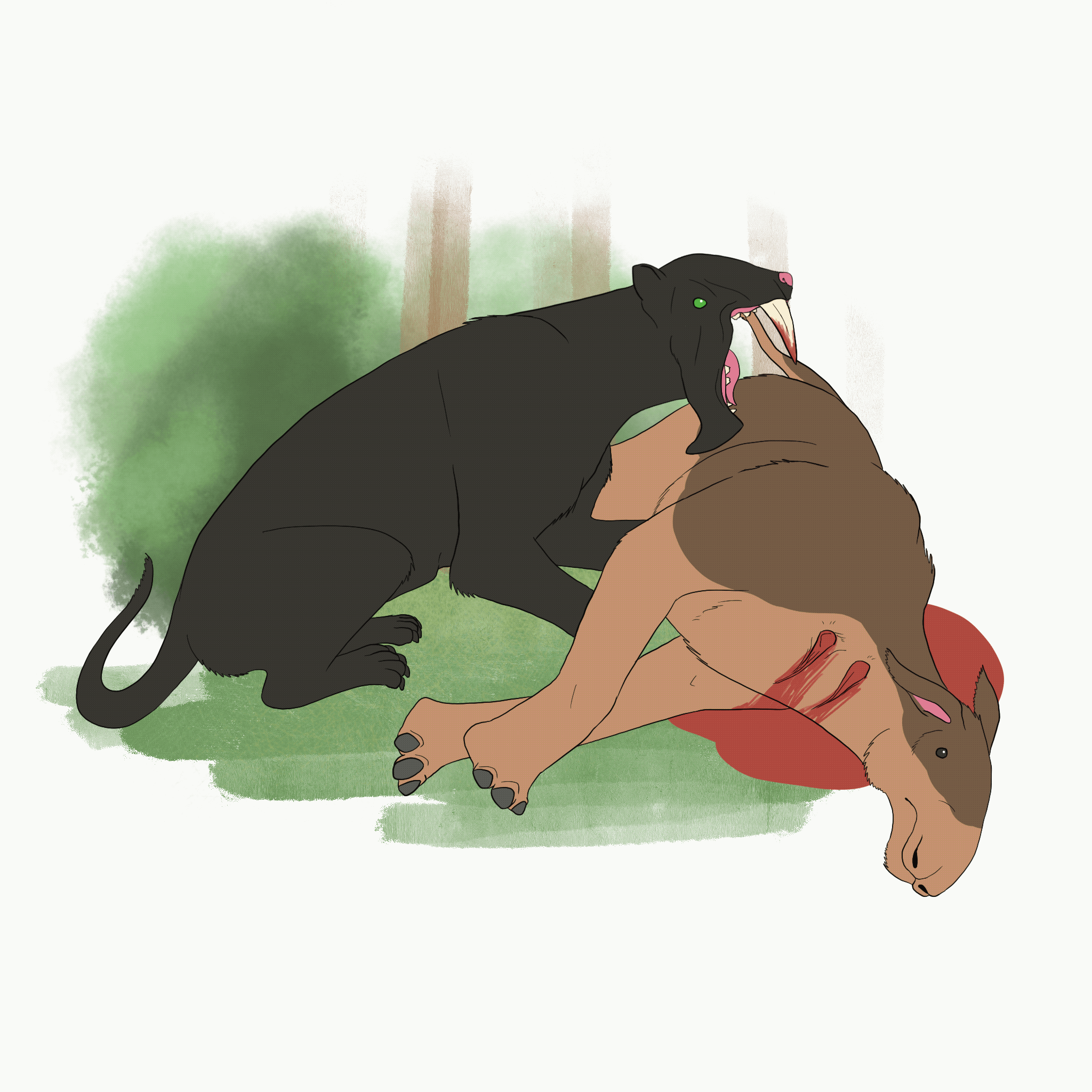
Thylacosmilus (meaning “pouch knife”) was a very weird, jaguar-sized marsupial from Miocene South America. New research into its skull and tooth morphology shows that it was probably an organ specialist, possibly a scavenger. It had basically no teeth between the massive canines–the better for slurping!
Dilong
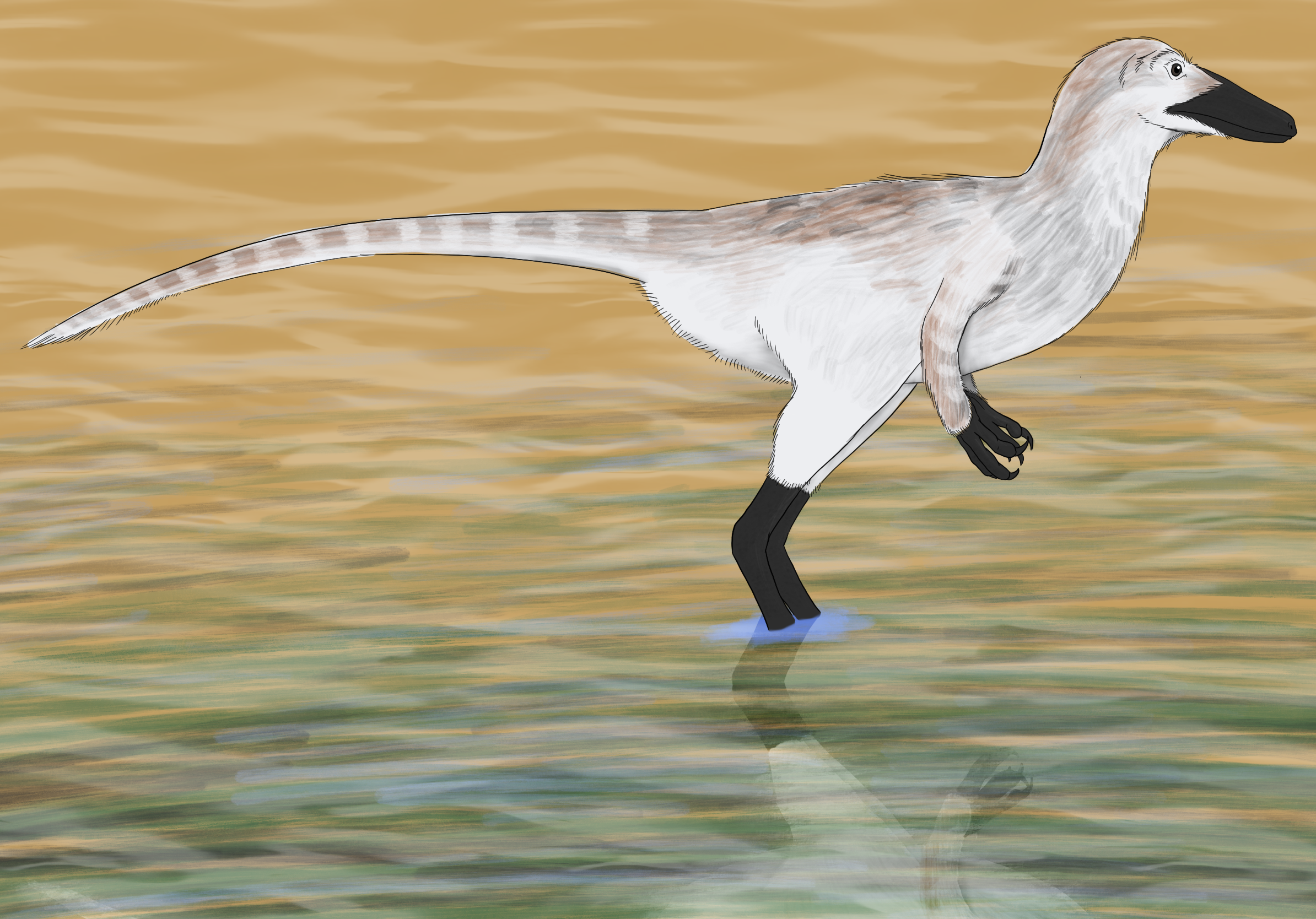
Dilong was a small basal tyrannosaur from Early Cretaceous China. I was looking for pictures to use in my Yixian Formation post, and found that there aren’t a whole lot of good reconstructions of this animal. Unfortunately, there still aren’t a lot of good reconstructions, because this one isn’t one of them.
Kulindadromeus
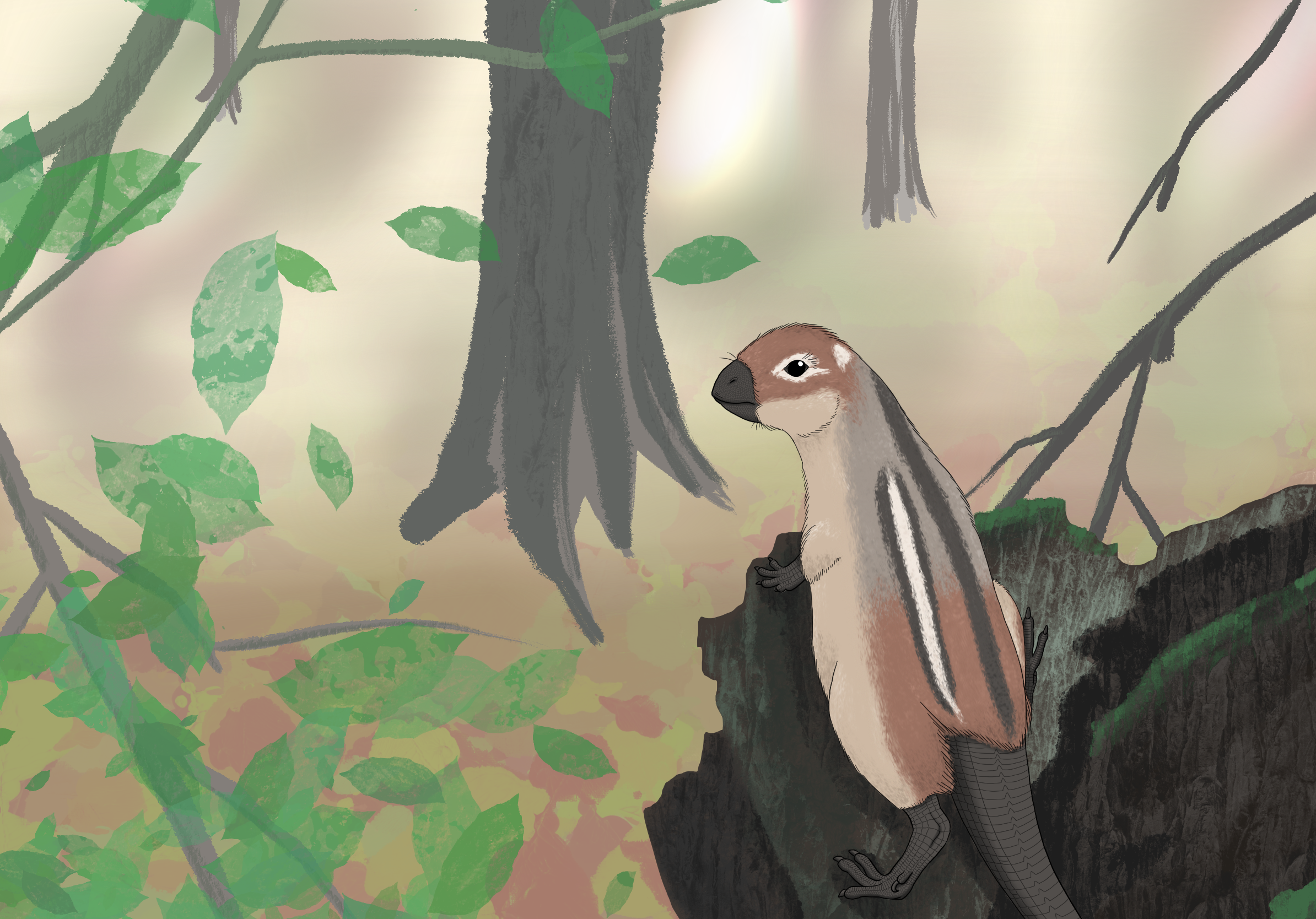
Fortunately, I was able to redeem myself with this reconstruction of Kulindadromeus, the small fluffy ornithischian from Middle Jurassic Siberia. I used this one in my profile post on the critter!
The Kings of the Cretaceous
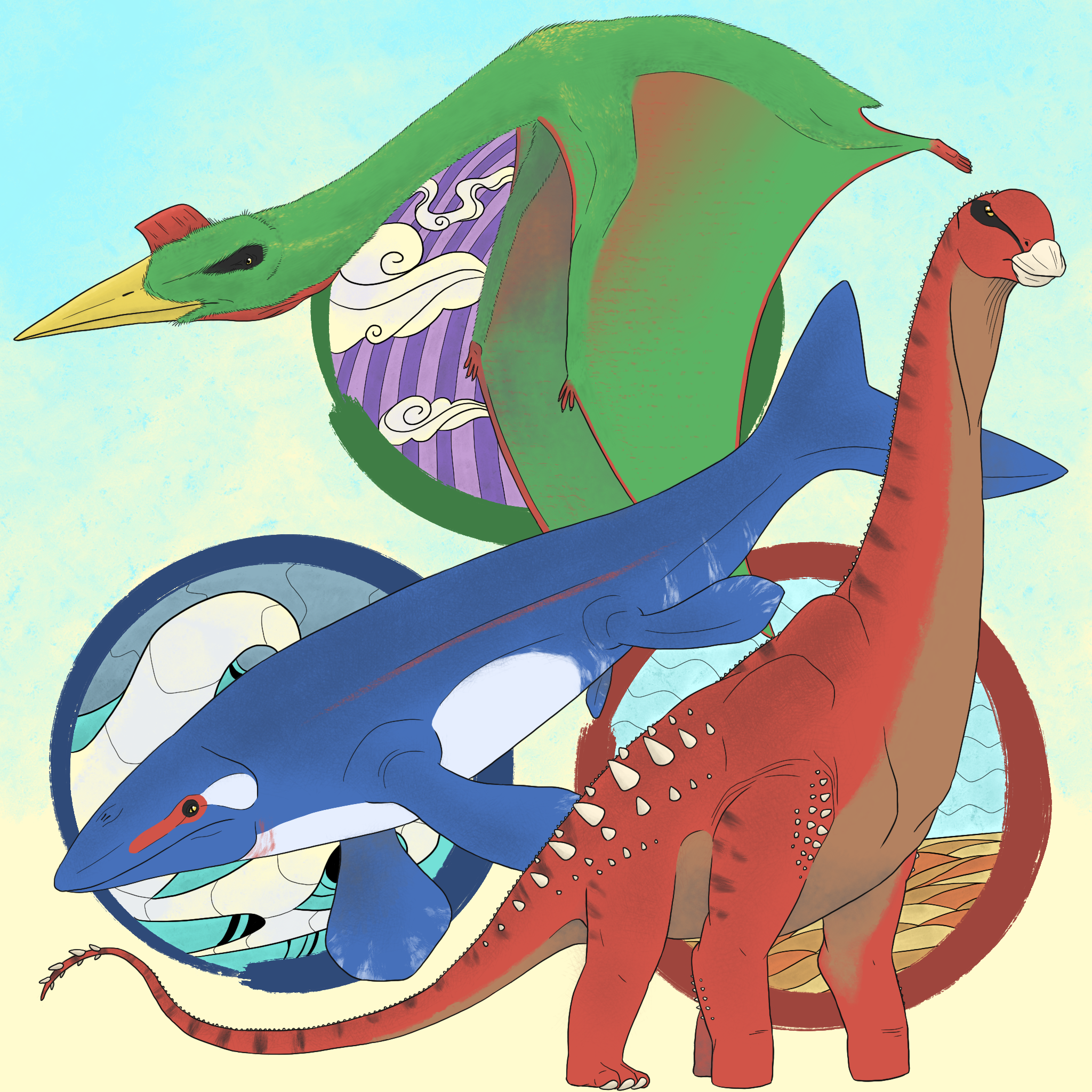
In the Latest Cretaceous of North America, the largest flying animal, largest walking animal, and largest…squamate lived alongside one another. Quetzalcoatlus northropi, the giant azdarchid pterosaur, had an 11m (36ft) wingspan and could weigh up to 250kg (550lbs). Mosasaurus hoffmanni, the mosasaur, was 17m (56ft) and I’m having a hard time finding an official weight estimate, but based on similarly-sized aquatic reptiles, probably weighed around 15 tonnes. And Alamosaurus sanjuanensis, the giant titanosaur, was 30m (98ft) long and weighed 70-80 tonnes. (Needless to say, this picture is not to scale!)
I couldn’t help but be reminded of the legendary weather trio of Pokemon, since these real-life titans ruled the land, sea, and air of their environment. Reddit was a big fan of this crossover.
I’m really happy with how Alamosaurus turned out. I don’t often draw sauropods, and their faces are hard for me to get right.
Ironduck
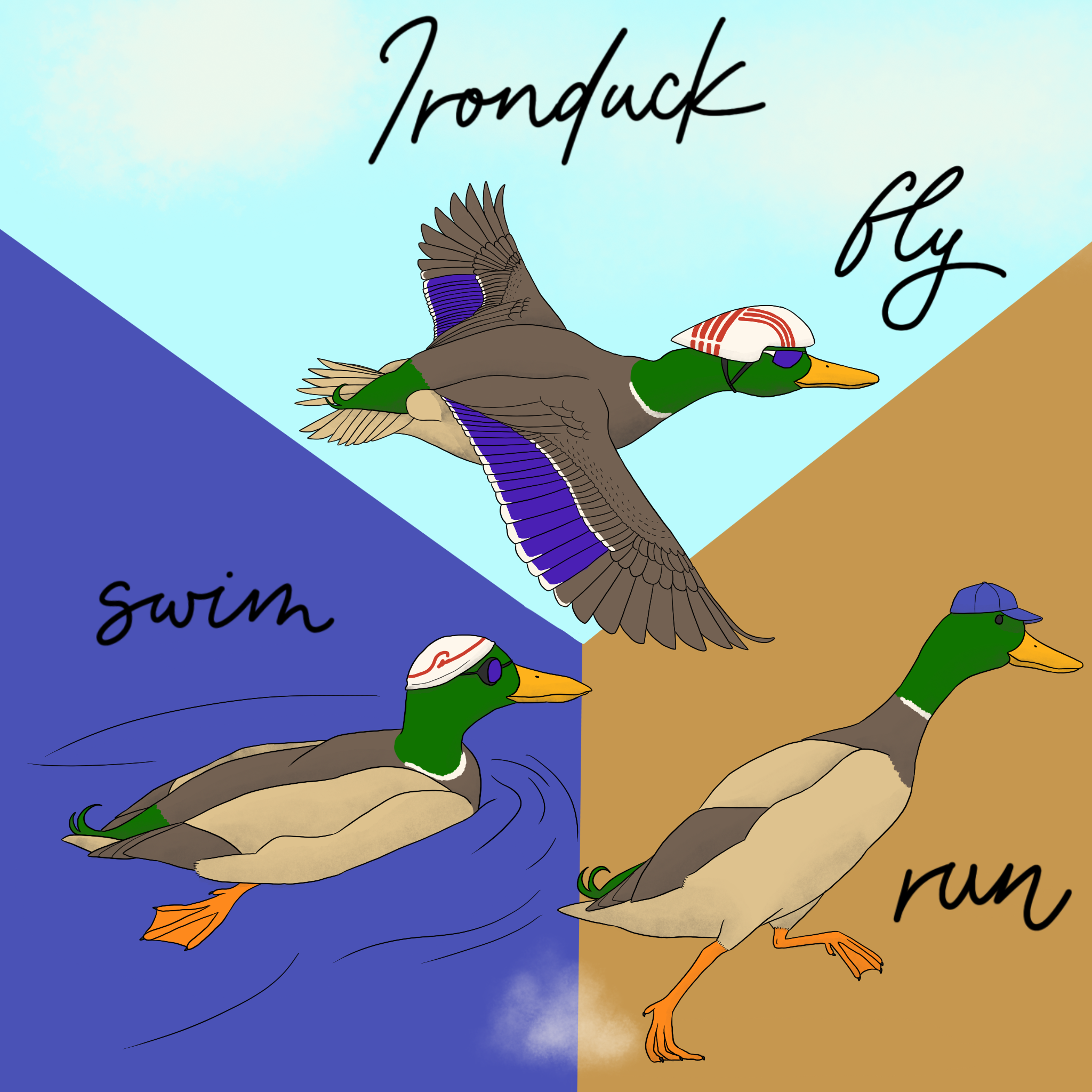
The duck is nature’s triathlete. No animal is better suited for all three environments!
Apparently there’s a very strange breed of duck called the Indian runner duck, which doesn’t fly, doesn’t nest, and stands upright like a weird little man. The duck in my picture is a mallard, but it’s running sort of like a cross between a mallard and an Indian runner, because the angular posture looks way more dynamic than a waddle.
Kongonaphon
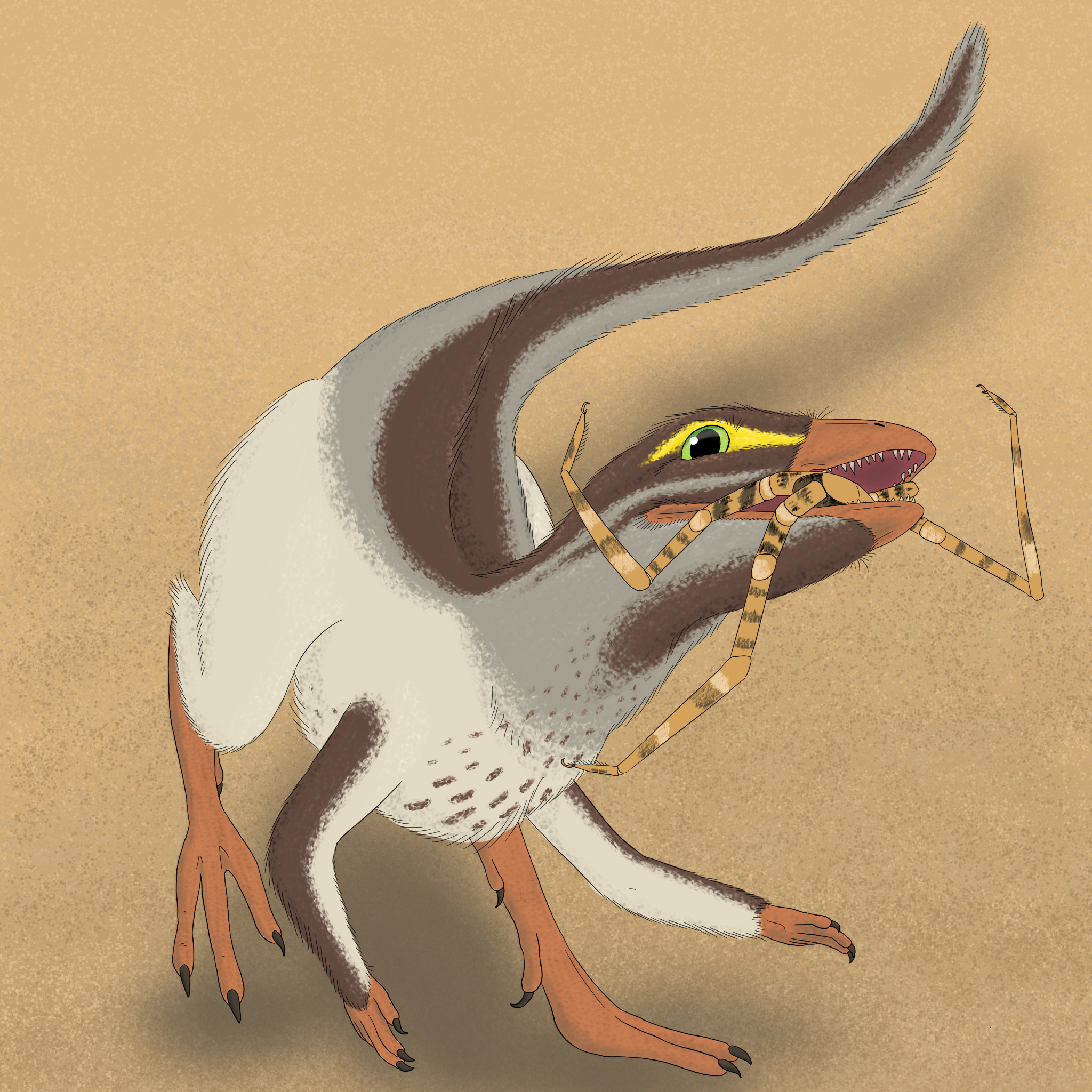
It’s the brand-new lagerpetid ornithodiran, Kongonaphon kely, the tiny bug slayer! This four-inch-tall animal lived in Middle Triassic Madagascar, and its fossil represents the first tooth material known from the lagerpetid family, showing that they were insectivores. Mounting evidence suggests that the common ancestor of dinosaurs and pterosaurs was super small. Read more about it here (less technical) and here (original paper).
Claws
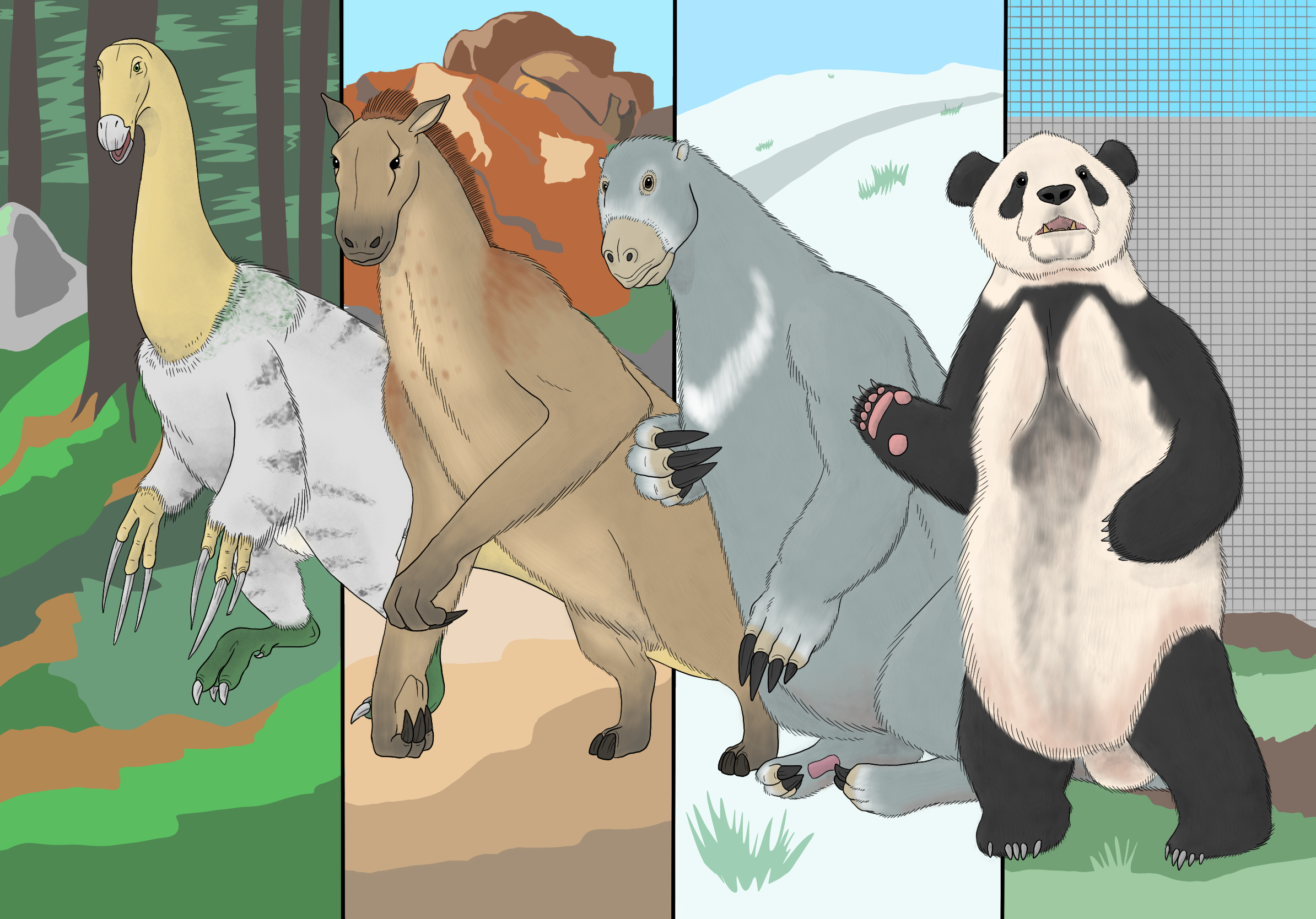
Big clawed herbivores throughout history! Not to scale. Left to right: Nothronychus, the 800kg therizinosaur from Late Cretaceous North America; Anisodon, the 600kg chalicothere from Miocene Europe; Megalonyx, the 1-tonne ground sloth from Pleistocene North America; and the giant panda, the 160kg bear from Holocene China.
The colors and biomes are reminiscent of a certain legendary quartet. Someone from Reddit suggested this as a followup to my Kings of the Cretaceous piece, though the similarities in this one are a bit more subtle.
Graciliraptor
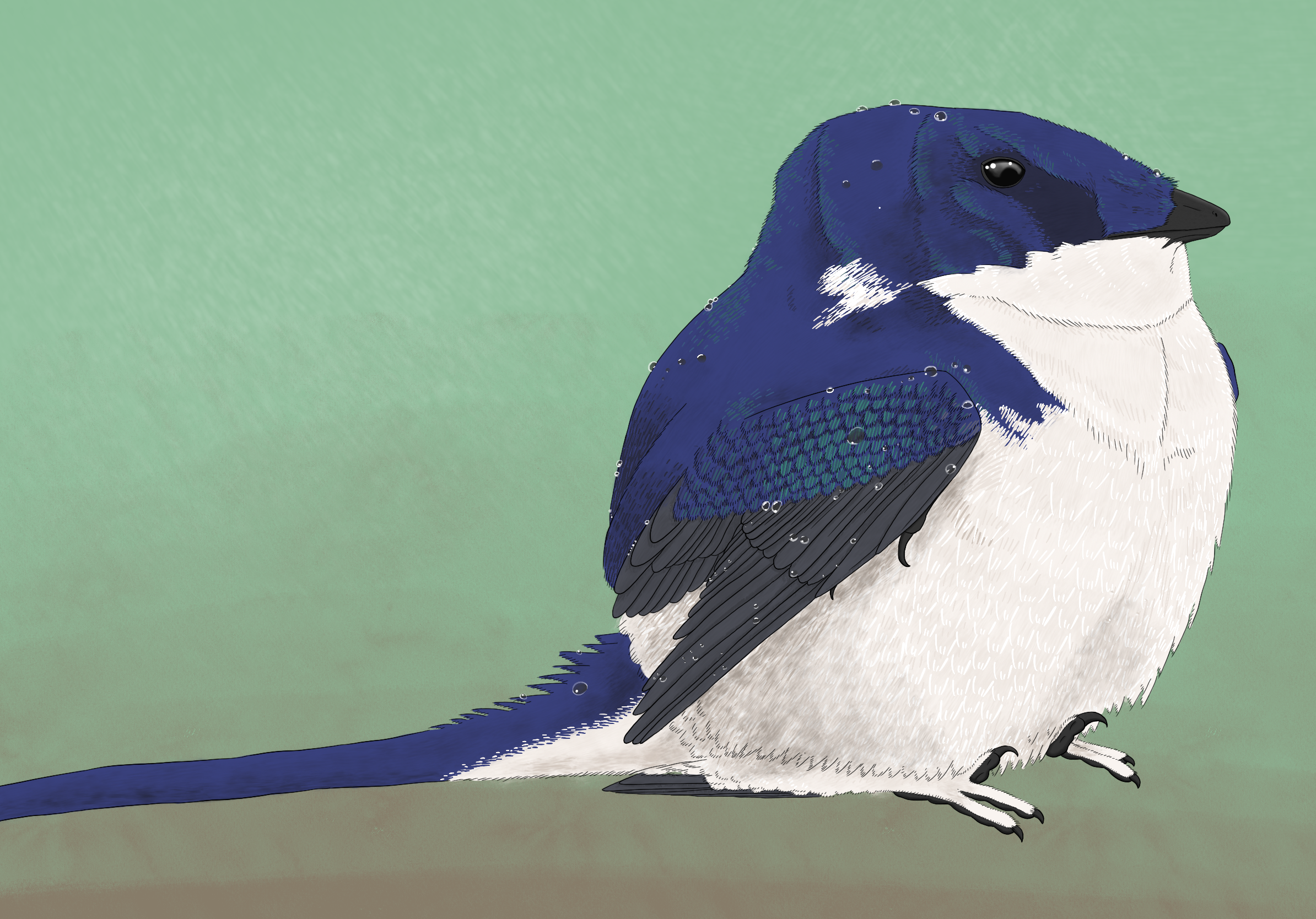
The little microraptorine from Yixian, Graciliraptor, floofs itself against a drizzle. Modern birds are well-known for concealing their skeletal shape using compact postures and extensive feathering, so why not stem-birds too? Check out the inside view!
The new discovery of a Microraptor specimen with a group of three half-grown feathers on one wing provides the first evidence for sequential molting outside of birds. Most modern flighted birds replace their feathers a small group at a time, strategically, so that they’re always able to fly, while modern flightless birds and some dinosaurs like Incisivosaurus are known to have molted catastrophically, losing all their feathers at once. If Microraptor molted sequentially, flying must have been very important to its lifestyle.
Psittacosaurus
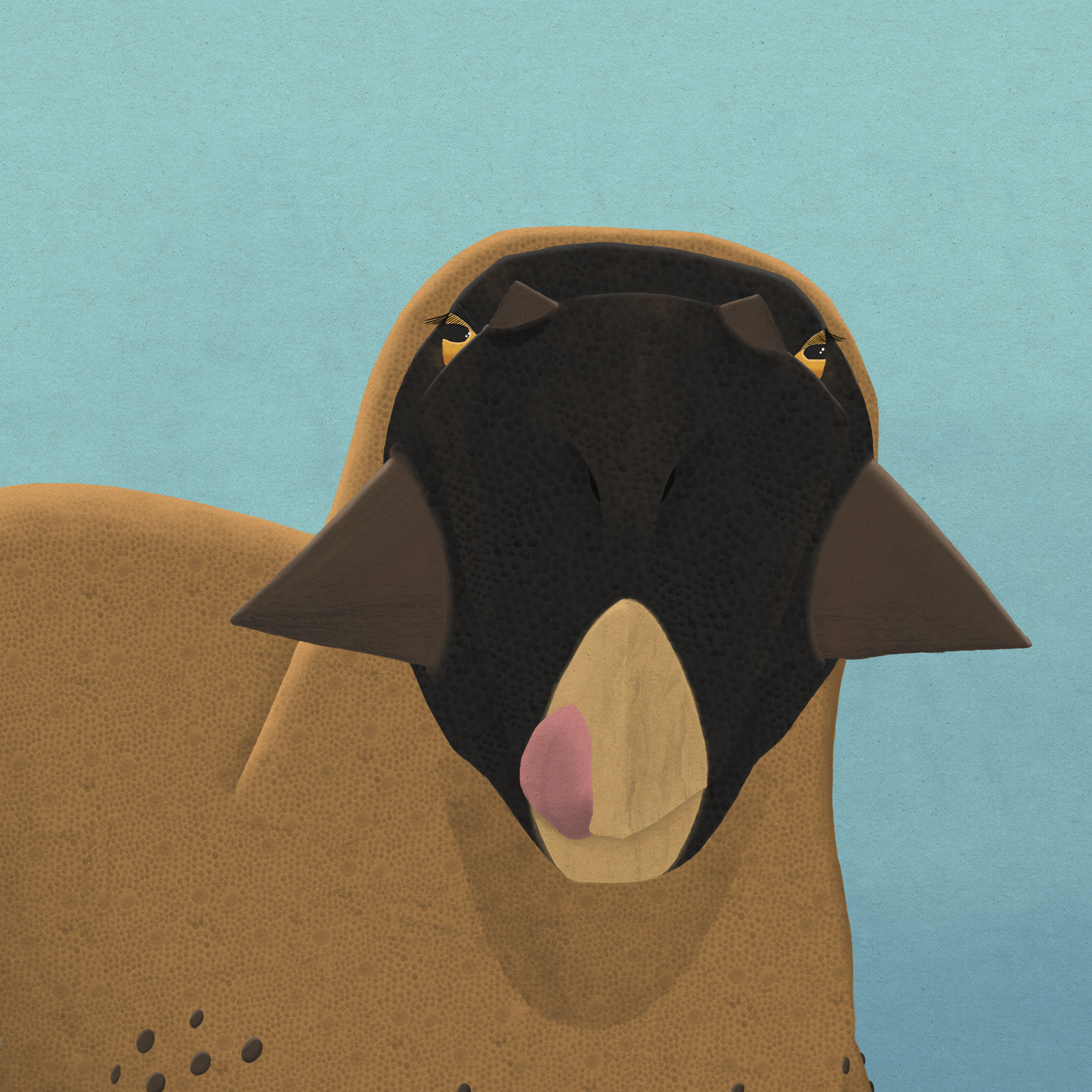
It’s another Yixian resident, Psittacosaurus, the small basal ceratopsian. There are 12 different species of Psittacosaurus, each with distinctive face ornamentation; this one is the type species, P. mongoliensis. I was trying a new style, inspired by Keller Pyle, with no outlines and heavy textures, but it ended up looking more like South Park.
Dromaeopodus
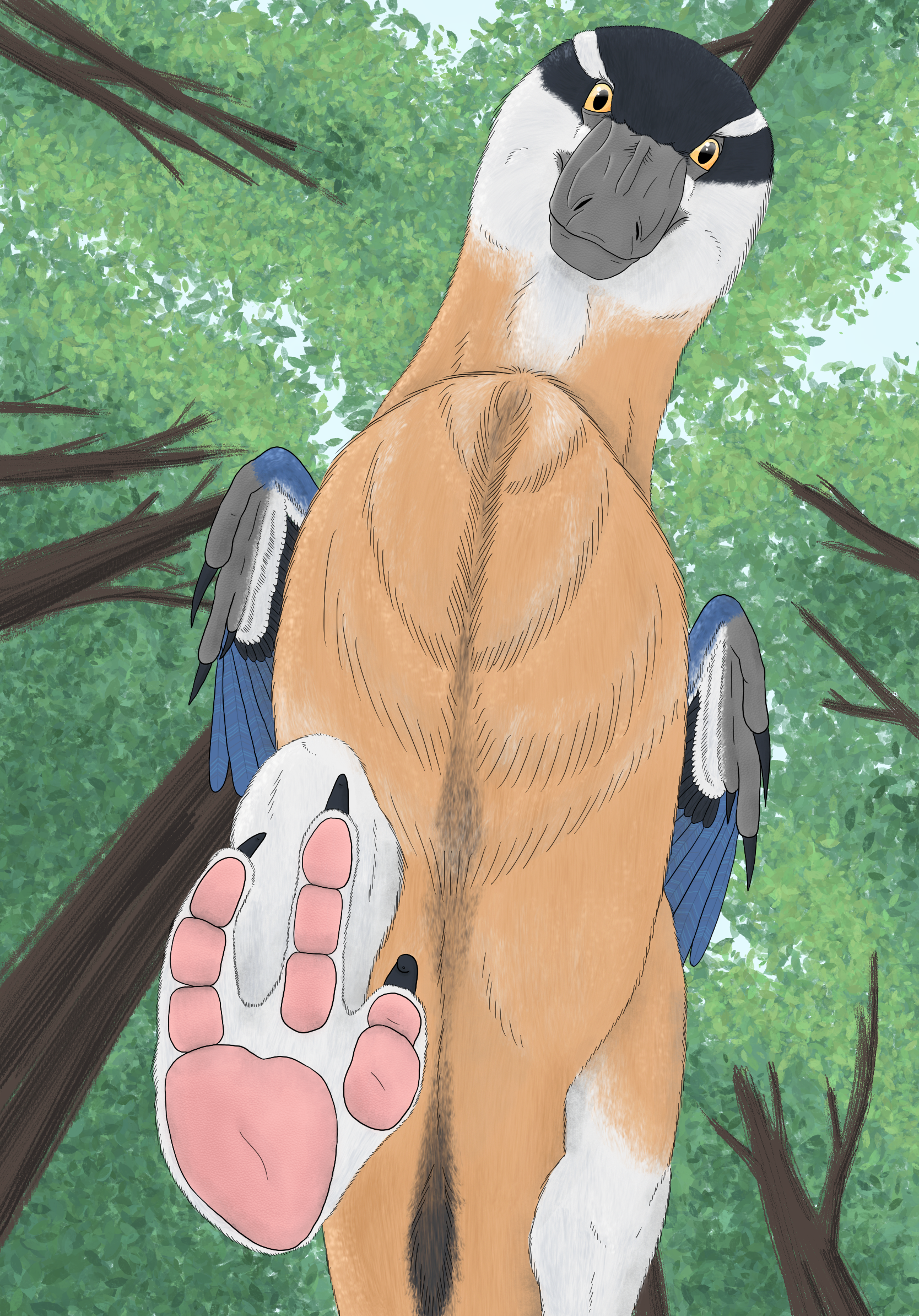
Dromaeopodus isn’t the name of the dinosaur–it’s the name of the footprint! Ichnofossils, or trace fossils, such as trackways, coprolites (fossilized poop), or burrows, get their own scientific names, since it’s usually very difficult to match up a trace with a trace-maker with any degree of confidence. Dromaeopodus is a footprint from a dromaeosaur (raptor dinosaur) from Early Cretaceous China. We don’t have any candidate dinosaurs for who made it right now–the footprint is pretty large, and we don’t have fossil material from any dromaeosaurs large enough to have created it from that time and place, so the dinosaur I’ve depicted here is a generic deinonychosaur.
Dromaeosaurs are often compared to cats–they’re hypercarnivores, range from, well, cat-sized to tiger-sized, were probably agile and quick, and were covered in blades. They even had toe beans! Dromaeopodus and other ichnogenera thought to belong to dromaeosaurs show that they had catlike padded toes. The footprints also show that they did, in fact, hold their “killing claws” in a hyperextended posture when they walked, to keep the claws sharp.
This composition was inspired by a picture of a cat walking on a coffeetable. The colors are inspired by a red-breasted nuthatch.
Leaellynasaura

I saw this video of Eurasian eagle-owls moving their heads around on Reddit, and was inspired. Since owls need good night vision, they have really big eyes for their head size, and to fit those huge eyes in there the eyes have to be tubular in shape. That makes it so they can’t move their eyes in their sockets, so they have to move their heads around to look at stuff.
I thought Leaellynasaura would be a good non-avian dinosaur candidate for a similar adaptation because, being a polar dinosaur, it would’ve experienced months-long nights, justifying the need for good night vision. It also had a similarly small head and big eye sockets. Leaellynasaura had arms, but I made mine fluffy enough that they don’t show on the outside.
Baryonyx bubble bath
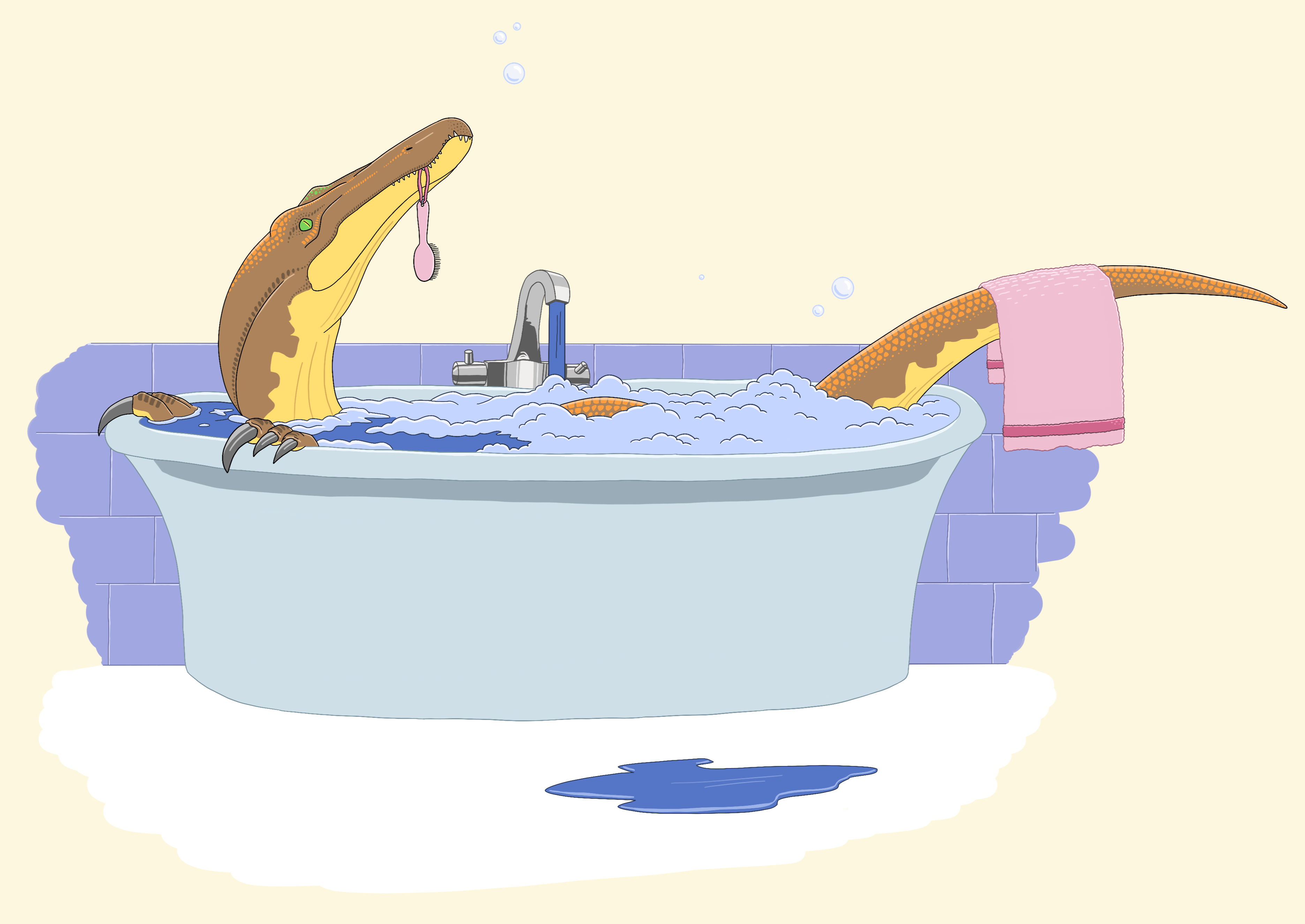
This was originally a pencil drawing posted to r/Paleoart by someone called u/MagicMisterLemon. I got his permission to digitally trace and color it, and then made this, which I think turned out pretty well. I like the concept because (a) imagining what it would be like to have a non-avian dinosaur as a pet is fun, (b) spinosaurids were semi-aquatic so presumably Baryonyx would enjoy splashing around, and (c) the alliteration is so good.
Protarchaeopteryx
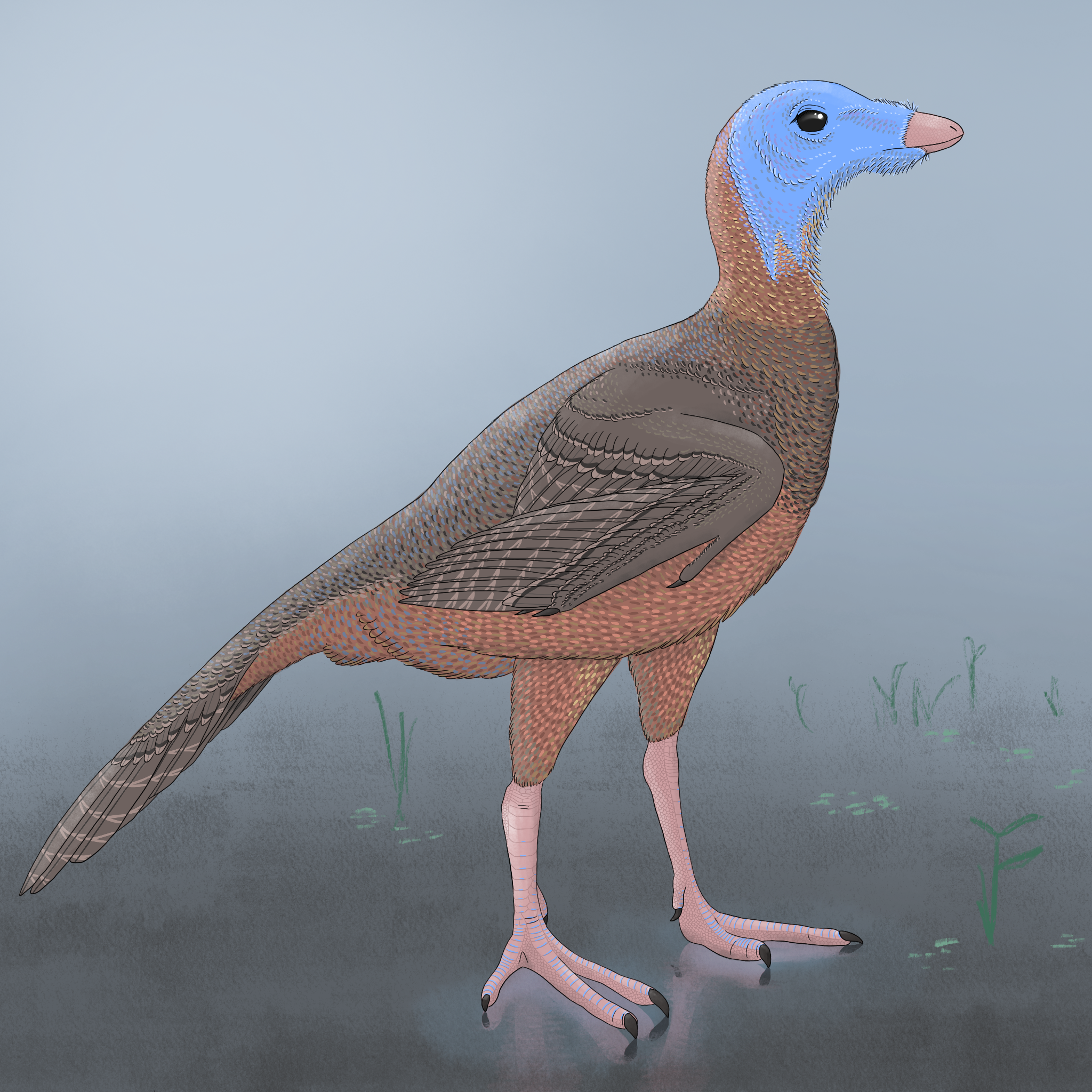
No relation to Archaeopteryx. This was a small feathered dinosaur from the Yixian Formation, possibly a basal oviraptorosaur. I drew this because I was doing some preliminary research for my Yixian Formation blog post and noticed that all the art on Wikipedia of this guy was just terrible. Not only was it horribly shrink-wrapped and had primary feathers coming out of nowhere, it also was just an ugly piece of art. (Sorry if you are or you know the guy who drew it.) So now the article, “Paleobiota of the Yixian Formation” has my art in it instead!
Tiny titan

The new discovery of a titanosaur embryo’s fossilized skull gives us a lot of new, weird information about how these little dinos looked! They had keratinous horns on their nose, sort of like an egg tooth except it wouldn’t’ve fallen off as they grew, and forward-facing eyes. Adult titanosaurs aren’t known to have had either of these things. Were the babies doing something ecologically different from their parents? Killing insects or something? We don’t know what genus the new fossil belongs to, but some people are suggesting Tapuiasaurus. It’s definitely a titanosaur at least, from around 80 million years ago in Argentina, and so could’ve been a baby of one of the most massive animals ever to walk.
Is mine bipedal? Well, I can’t find additional sources for or against this, but it’s been suggested based on trackway evidence in Colorado that some baby sauropods were bipedal. I depicted this one as facultatively bipedal to hedge my bets. The colors are inspired by baby emus and pangolins.

